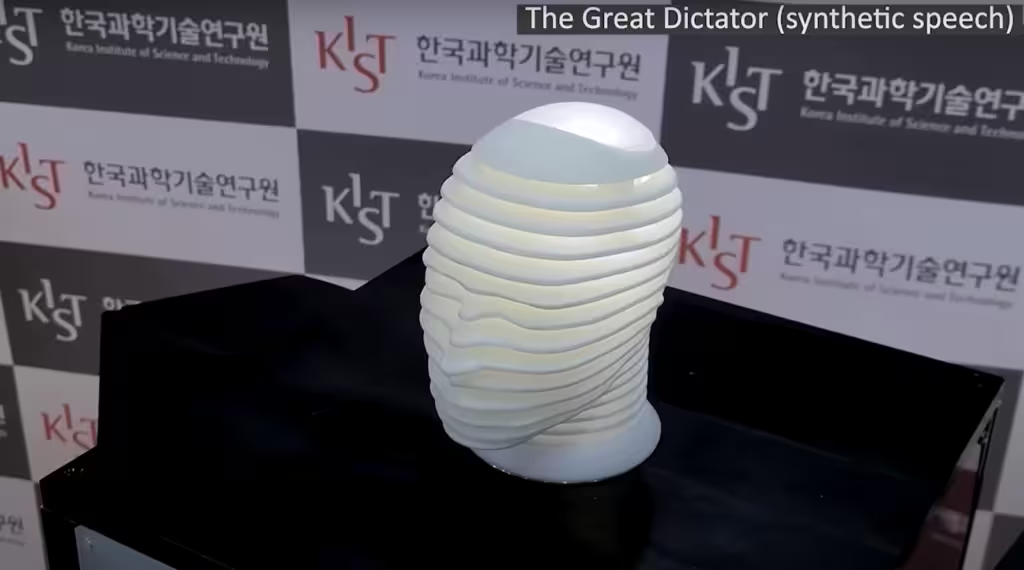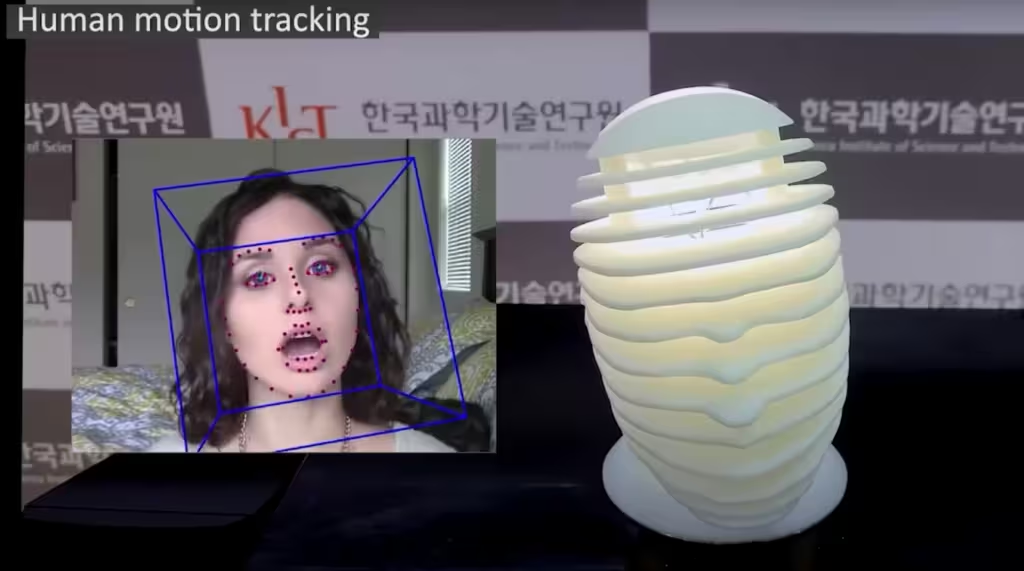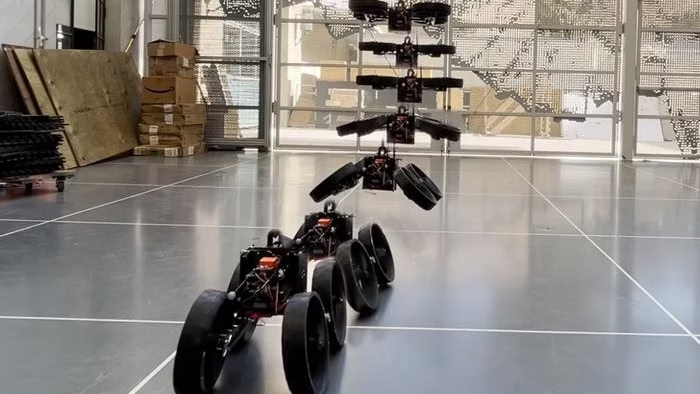Researchers from Sejong University and the Korean Institute of Science and Technology (KIST) have developed an animatronic robot head called Ray to help improve social interactions.
From Superinnovators 10/07/24

The robot head mimics human talking and singing movements through a combination of layered 3D printing and a tendon-based actuation system.
Ray’s structure includes contoured layers that represent human facial features, such as the eyes, nose, mouth, and chin, enhancing its realism.
The robot’s lightweight design and separate tendon-based actuation allow for smooth, fast movements of the head.
An audio-driven motion generation module enables Ray to synchronise its head and mouth movements with audio input automatically.
In video footage released this month, Ray can be seen moving to Charlie Chaplin’s final speech from the Great Dictator film, Sam Ryder’s Tiny Riot song and a South Korean song called Tree.

The vocal parts of the songs were isolated from the rest of the instruments to allow the audio-motion module to trigger accurately.
Ray could be utilised in various applications, including integration with a humanoid to produce a talking robot, robot singer, or master of ceremonies or as a standalone head to represent AI chatbots.
The researchers believe this work opens up new possibilities for minimally designed audio-animatronic robots, potentially reducing production and maintenance costs.
The robot was entirely built using 3D printing technology, simplifying its production process.
This research was published in Volume 40 of the IEEE Transactions on Robotics journal.
The team at Sejong University and KIST say Ray could help revolutionise human-robot interaction in social settings.
More info
You may also be curious about:
-

Oxford physicists recreate extreme quantum vacuum effects in simulation
-

Tiny device spins blood clots away
-

Skin bacteria help protect us from sunlight
-

New brain-reading video game reduces chronic nerve pain
-

Black tea and berries could contribute to healthier aging
-

Viral mouth-taping trend ‘sus’ says Canadian sleep expert
-

New sodium fuel cell could enable electric aviation
-

The most extreme solar storm hit Earth over 14,000 years ago, scientists identify
-

Electronic face tattoo gauges mental strain
-

Solitonic superfluorescence paves way for ambient temp quantum computing
-

Cosmic mystery deepens as astronomers find object flashing in both radio waves and X-rays
-

The rotors are also the wheels on this morphobot
